Among the huge amount of building materials and roofing options, the method stands out in which the roof does not fit, but is sprayed. And although the sprayed roof is known recently, but this coating is gaining more and more popularity.
The explanation for this fact is very simple. Sprayed roofs are a modern, technologically advanced and reliable material, which with its unique properties deservedly received approval from many consumers.
Generally speaking, the essence of the method is as follows: to cover the roof by spraying, a mixture of bitumen and polymers is sprayed using special devices on the roof surface. Thus, a sufficiently strong and elastic layer is formed on the entire roof surface, which, despite the weather conditions in the form of snow and rain, gives reliable waterproofing properties.
Content
Strengths of Liquid Materials
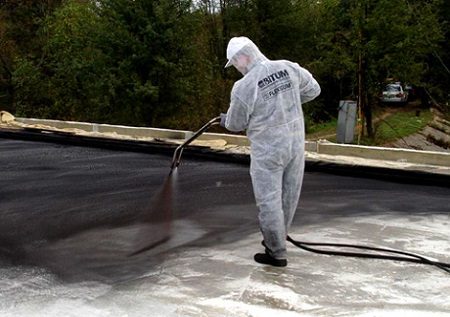
The sprayed roof is also very often compared with liquid rubber and some of the materials are actively used in roof decoration. Here are the most common types:
- roofing mastics based on acrylic and polymers;
- bitumen-polymer, which is based on water;
- two-component rubber.
When processing roof surfaces with liquid materials based on rubber or using other types of liquid materials, such as polymer mastics, the cost of a roof can be significantly reduced. Because in this case, you can not use waterproofing materials.
The market today is saturated with various types of liquid roofing materials. In this case, the buyer has a huge choice, you can choose from various manufacturers, and various brands.

It is better, of course, to take roofing materials of this type only from trusted manufacturers. After all, if you take "no name", that is, a chance to stumble on a low-quality product.
It is also worth considering parameters such as the area of the soft roof and its future loads. After all, the choice of one or another material may also depend on this.
Depending on the complexity of the roof structure, there may be some features in terms of installation work, which also need to be taken into account.
If the choice is made in favor of liquid roofing materials, such as mastics or emulsions, then you need to remember that they can be applied without preliminary heating.
In this case, the installation work can be easily handled independently. At the same time, if there is any instruction with the purchase of liquid material, then it is better to stick to it. And of course, before covering the roof, you need to carry out all the preparatory work to level it, as well as prepare the entire roof surface for future work.
Another advantage of water-based liquid materials is that they are completely harmless to humans and their surroundings. Such materials have no odors, do not evaporate, and therefore are considered, from an environmental point of view, absolutely safe.
And of course, one of the main advantages of these materials is that, using liquid materials, you can be sure that the roof will be waterproofed not only at any joints, but also in other structures of complex shape.
Also an indisputable advantage will be the fact that the materials have excellent adhesion characteristics, which eliminates punctures and leaks, as well as any penetration of water.
After the installation is completed, a membrane is formed on the roof, very similar to rubber, but with only one condition, that the roof will be absolutely seamless with good waterproof characteristics.
Widespread use allows them to be used not only on the newest roofs, but also to carry out periodic repairs on old ones, while the initial material does not matter.
Spraying process, what is its advantage?
A sprayed roof created using the spraying method has been used in construction quite recently. A usual area where spraying is used is to give the roof additional qualities of thermal insulation using a rather well-known coating such as polyurethane foam.
Here are just the main advantages when using this material:
- inability to absorb and retain moisture;
- the ability to make a seamless roof, while completely eliminating the phenomenon of cold bridges;
- quick and effective fight against the sealing of all artifacts of another roof, including the elimination of small cracks on the entire roof surface;
- good susceptibility (adhesion) to any roofing;
- simple, work on applying materials to a different type and type of roof.
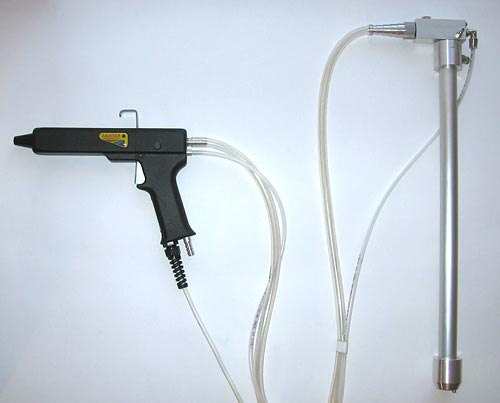
In order to carry out work, and so that the result would be of good quality, it is necessary to have specialized equipment, which must have such components as a mixer, as well as a spray. In the mixer, mixing of the components occurs, which occurs under the influence of air. After that, the finished mixture is discharged through the nozzle into the sprayer.
This technology allows the use of various types of liquid materials, including various two-component liquid-based rubbers, as well as special mastics for roofing.
The success of this technology allows us to say that in the future the use of such materials will become widespread.
Roof waterproofing, what does the whole process consist of?
If we talk about liquid rubber, then its feature is that it lays well on almost any type of material. What is most interesting, when processing it, in some cases, it is not necessary to dismantle the old coating. This is due to the fact that the new composition can perfectly isolate all the bumps or flaws in the old material.
Its composition usually consists of a mixture of bitumen, an admixture of polymers and water. When the entire sprayed roof will be covered with a mixture, then when reacting with air, the composition from a liquid state becomes solid, quickly forming a reliable protection for the entire roof.
Rubber based on polyurethane, conditionally, can be divided into several subcategories:
- The compositions are single-component. They are sprayed over the entire surface of the roof in an airless way. In this case, it is necessary to use special devices that operate under high pressure.

Equipment that was originally intended for liquid rubber coating should never be used for other mixtures.
This type of material during application easily hardens, but at the same time continues to have some elasticity properties.
- The compositions are two-component. This type of spraying occurs when the two components are mixed, when applied. These components are a hardener based on water, as well as a second component from a mixture of bitumen and polymers. All this “cocktail” under the influence of high pressure is supplied to the sprayer, and then the entire roof is treated with a layer of a certain thickness. In contrast to the previous composition, this work, after just a few minutes, is made very hard, which makes it possible to perfectly seal the entire roof.

Surface treatment with liquid rubber occurs in several layers, first the first layer is applied, then it is allowed to dry, and after drying, the second is applied.
- There are also so-called polymer-bitumen materials. This subspecies of roofing materials is applied exclusively by hand. All that is necessary for work is the rollers and various construction spatulas, in fact, with these tools, they apply the composition to the entire roof.
The benefit of using such materials is that there is no need to purchase quite expensive equipment. All work can be carried out independently. This, of course, will take more time, but the cost of the work will be low.
For example, if you need to repair the old cottage, then in this case you can do all the work yourself, using only a spatula.
What size should a liquid rubber layer be applied? It depends on how strong the roof structures of the entire roof are, and what loads it can carry. For example, if you need to update the roof on which the roofing material lies, then you can apply it with a very thin layer, not exceeding one and a half millimeters.
If you need to create a new coating or roofing material should become the protection of reinforced concrete slabs, then, of course, you need a much larger layer (from three millimeters). In those places where the connecting elements of the roof are supposed, the rubber should be laid in several layers.
Sprayed mastic roof is gaining popularity
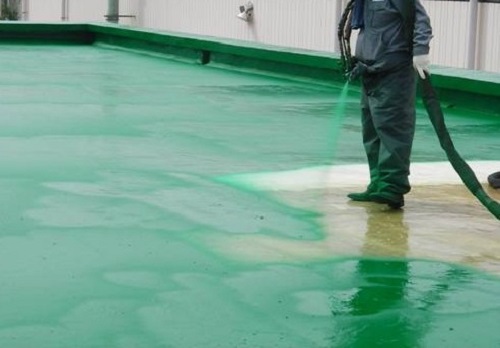
The roof, made on the basis of mastic, is finding more and more fans among developers.
This is a unique polyurethane material. Basically, they are used to referring it to the class of materials on a water basis, and they often rank it as liquid rubber. But this is not entirely true, the material is liquid polyurethane rubber.
What has earned this material the attention of the venerable public?
The soft roof, made by technology using mastics, has recently gained more and more popularity among Russian developers. Polyurethane roofing mastic is always water-based only.
This is an innovative polyurethane waterproofing material. Since this is a water-based material, it is referred to as liquid rubber. In fact, it is a liquid polyurethane rubber.
What are the main and main features of this material? It is unique in the sense that it incorporates the best qualities of different materials, and above all - the main characteristics of liquid rubber and the proven reliability of polyurethane materials.
Here are just a few of them:
It is perfectly applied in solid form and does not need to be heated.
After the layer hardens, a beautiful membrane is formed without seams.
This is certainly a good choice for those who are going to cover the roof with this technology. Since this type of roof has many advantages, high resistance to abrasion and sun rays (does not fade), and it can also successfully resist against those environments that are considered aggressive (this applies to both acids and alkalis).
If the coating was applied correctly, in compliance with all basic requirements and in the necessary order, then it can withstand large temperature conditions (from -100 to +100 degrees).
This type of roof will undoubtedly be a relevant and correct solution for areas of the far north and close to them. Indeed, even with small frosts, for example -20 degrees, the material will not lose in elasticity at all.
Polyurethane roofing - features and characteristics
It is also worth considering such a type of roof as polyurethane. She also has her own merits, consider the most basic of them:
- Liquid rubber together with polymers gives a unique mixture, which becomes very reliable. When applying this composition to the roof, it immediately becomes hard, but at the same time, such a property as elasticity also remains.In this case, the material is completely not afraid of either water or moisture. It is not subject to cracking and peeling. The composition is not at all afraid of ultraviolet rays. Only two millimeter layers are comparable in reliability with roofing material, which is laid in four layers. Moreover, this material will also be cheaper. From all this we can conclude that this mixture is very reliable and has sufficient durability.
- Excellent resistance to frost and temperature changes make it possible to use liquid polyurethane in almost all climatic zones;
- Very fast application of the material allows spraying work to be carried out as soon as possible, up to one thousand square meters of roof can be covered in one day. For example, if we take even rolled materials, then even such a performance is impossible to achieve;
- No special knowledge is required for spraying work. Work can be carried out even by a completely newbie in this matter. You only need to carefully study the entire technology for applying liquid materials;
- Another indispensable advantage of a polyurethane roof is the absence of seams after treatment with liquid compositions, and uniformity of coating appears (with the correct application technology). In addition, the material can even be applied to another type of roof;
- An additional plus, one can also consider the cleanliness and environmental friendliness of liquid roofs;
- For work, you do not need additional tools that are used in traditional types of roofing. This greatly simplifies all the work, and also significantly saves time for their implementation;
- Resistance to many chemicals is also its indisputable advantage;
- The absence of undesirable coating deformations in the form of blisters after roofing, which can be, for example, when laying roofing material;
- The polyurethane-based rubber material does not need to be heated before application, this material is applied cold, and this approach greatly simplifies all work on covering any type of roof.
Roof treatment with liquid rubber
Before you start work, you need to do some preparatory actions. First of all, you need to remove all interfering objects from the surface of the roof and clean it from unnecessary debris. If there are measures on the surface, they will provide good contact of the liquid mixture with the entire roof.

Working with liquid emulsions based on bitumen-polymer compositions is quite safe, so there is no need to use protective respirators for breathing. But if you have to work with mixtures of polyurethanes, then in this case you just need to take care of reliable respiratory protection!
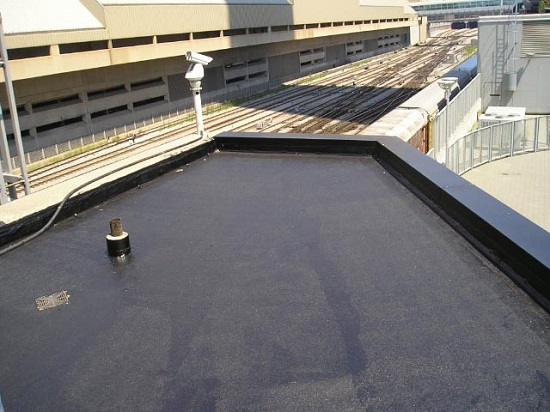
It should also be remembered that it is best not to apply liquid materials in extreme heat, just a small plus temperature will be optimal for such work.
The best property of a sprayed roof is that with its help you can quickly and quickly make “quick” repairs. For example, if suddenly, damage to any part of the surface occurred, then the best option would be to clean the place where the damage occurred with sandpaper, and then simply apply a new composition, aligning it with the previous one. As you can see, the advantage of the sprayed roof is obvious!
The expense will not be so big. One and a half liters of liquid rubber can easily cover one square meter of the roof, provided that the coating thickness does not exceed one millimeter.

In order for the protection of a roof made of metal or wood to be of the highest quality, then the layer of sprayed roof should be at least one and a half millimeters. To equip the membrane type roof, it is necessary to increase the layer of liquid mixtures to two millimeters.
Protective coatings based on one-component materials and mastics, which contain acrylic-polymer compositions, must be applied in two layers. In this case, before applying the second layer, you need to wait a certain time, until the first layer dries, and then, begin further work on applying the second.
As you know, materials based on liquid rubber are used in other types of work, they serve not only as an excellent material for protecting the roof. Such universal compounds are used on those objects that need reliable protection against all types of moisture. Often they find application in the design of pools, various types of wells, in some foundations of buildings and so on.
A sprayed roof is not only a reliable protection against moisture, but also from other weather troubles at any time of the year. By spraying with well-selected mixtures and using the specified technology, you can be sure that your home is under reliable protection for a long time !!

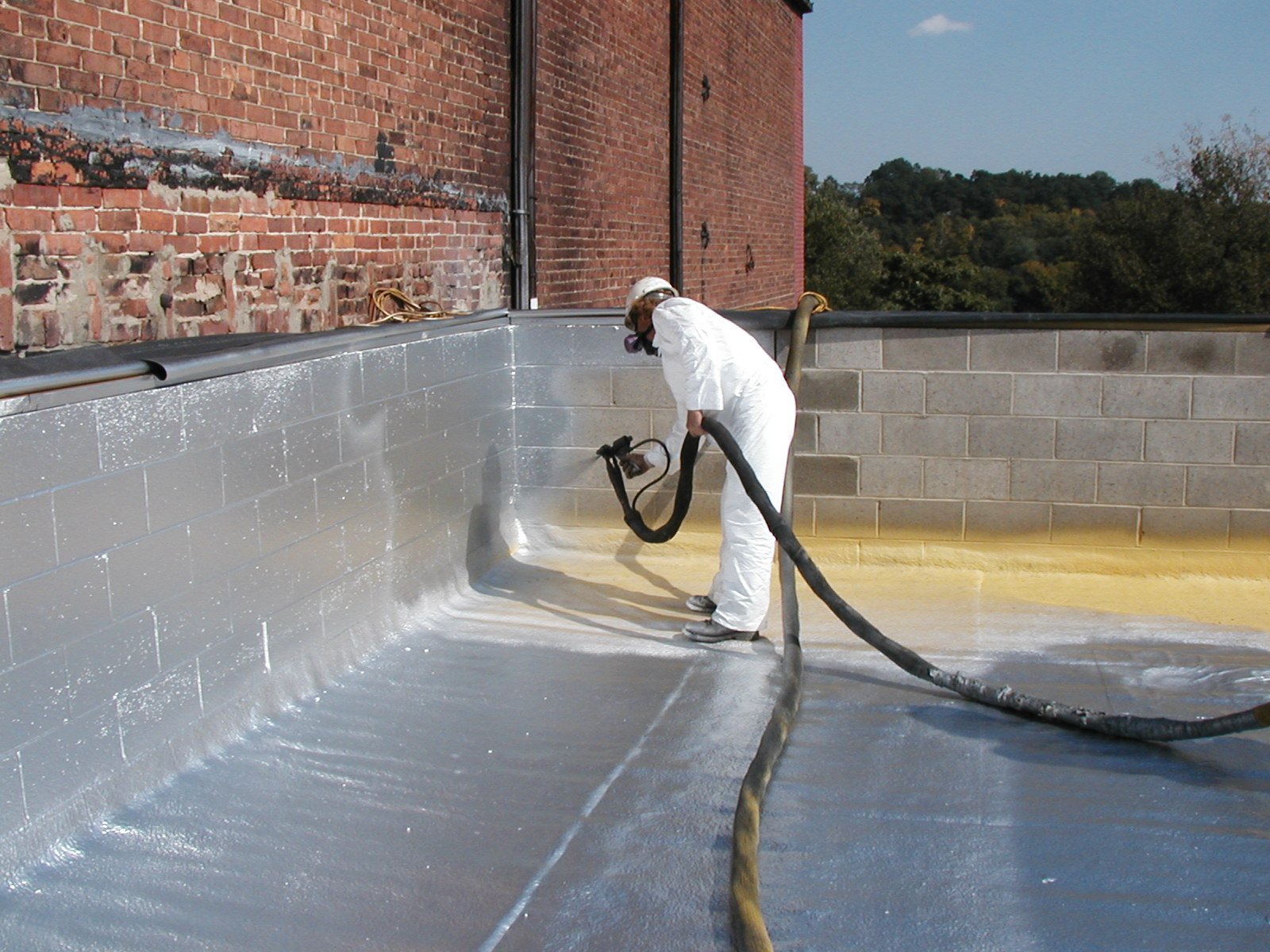
Alas, no comments yet. Be the first!